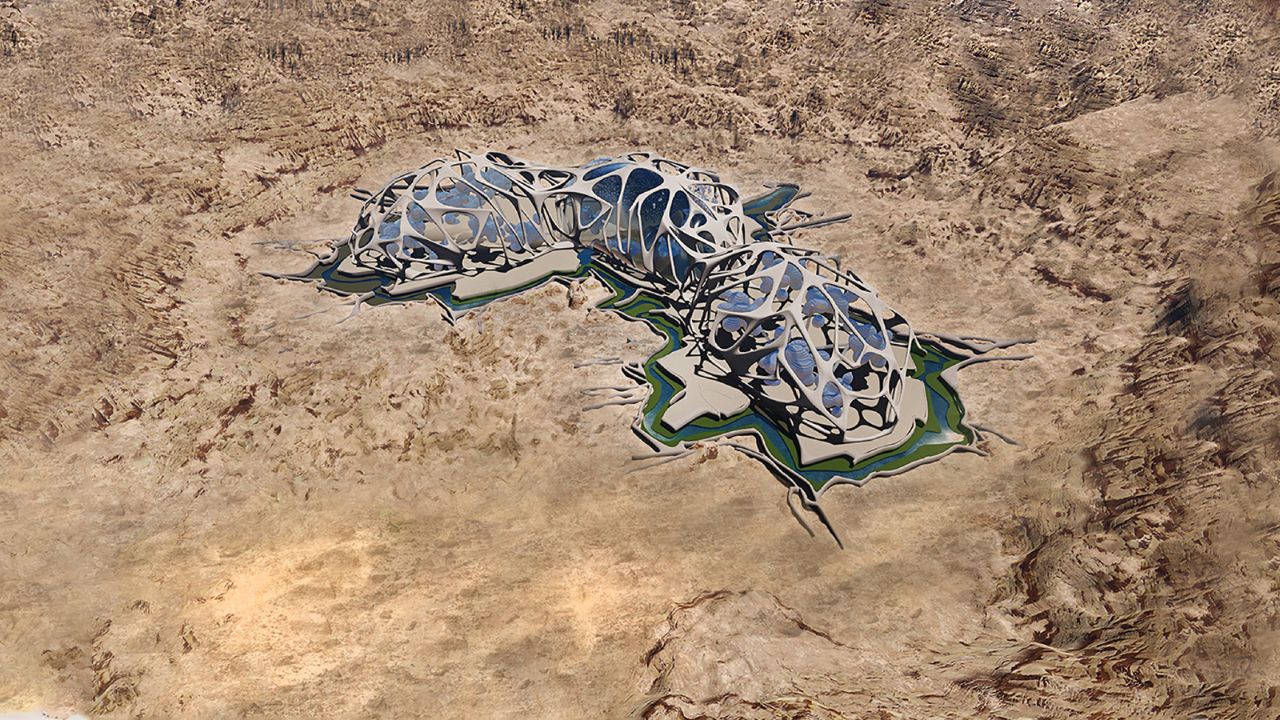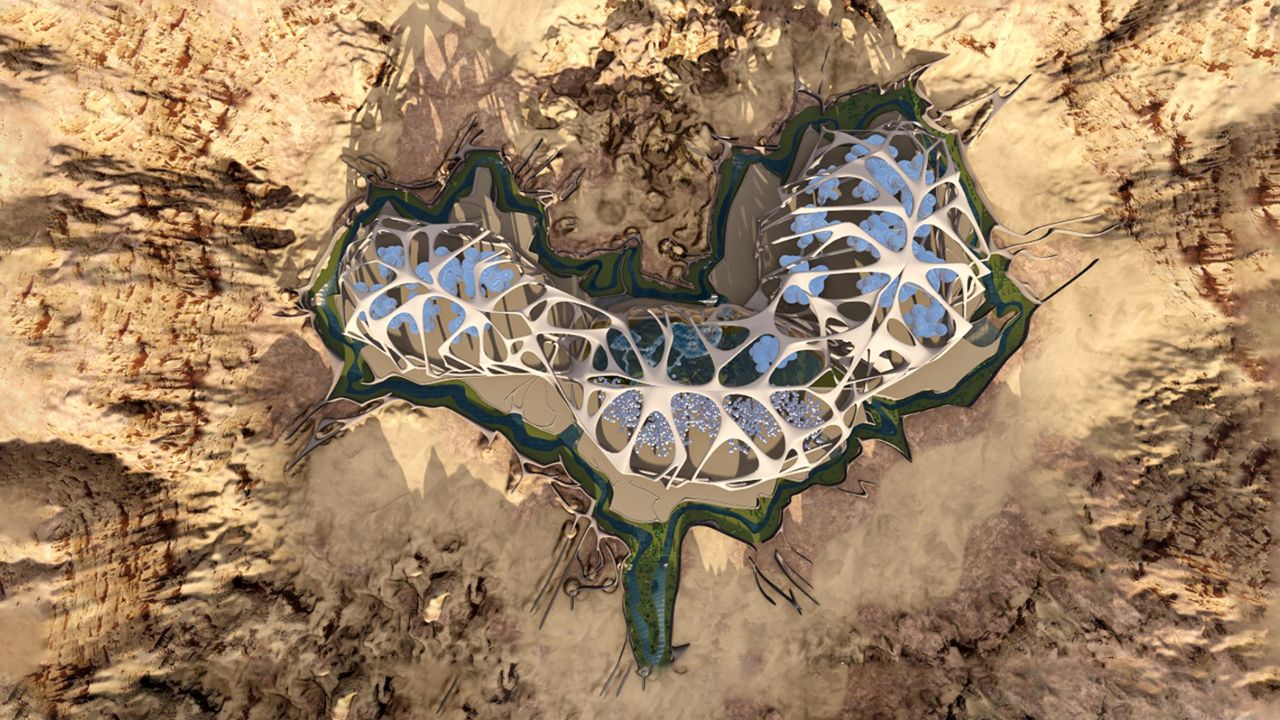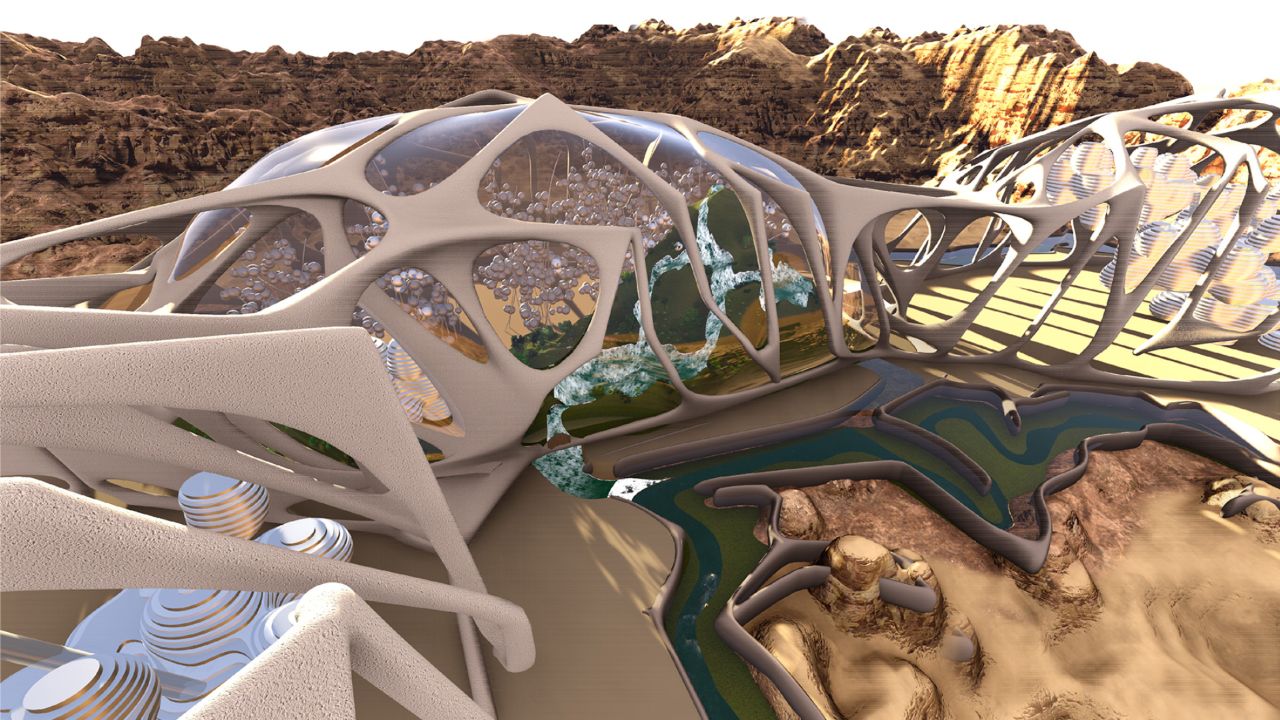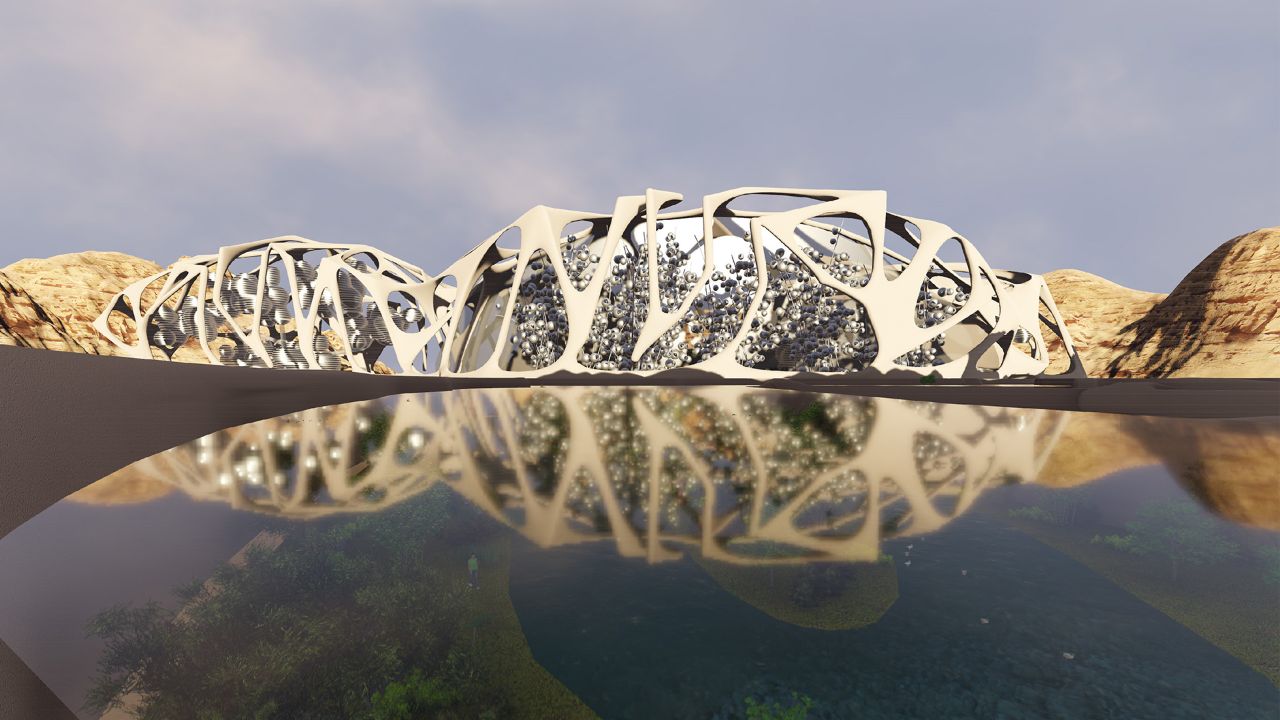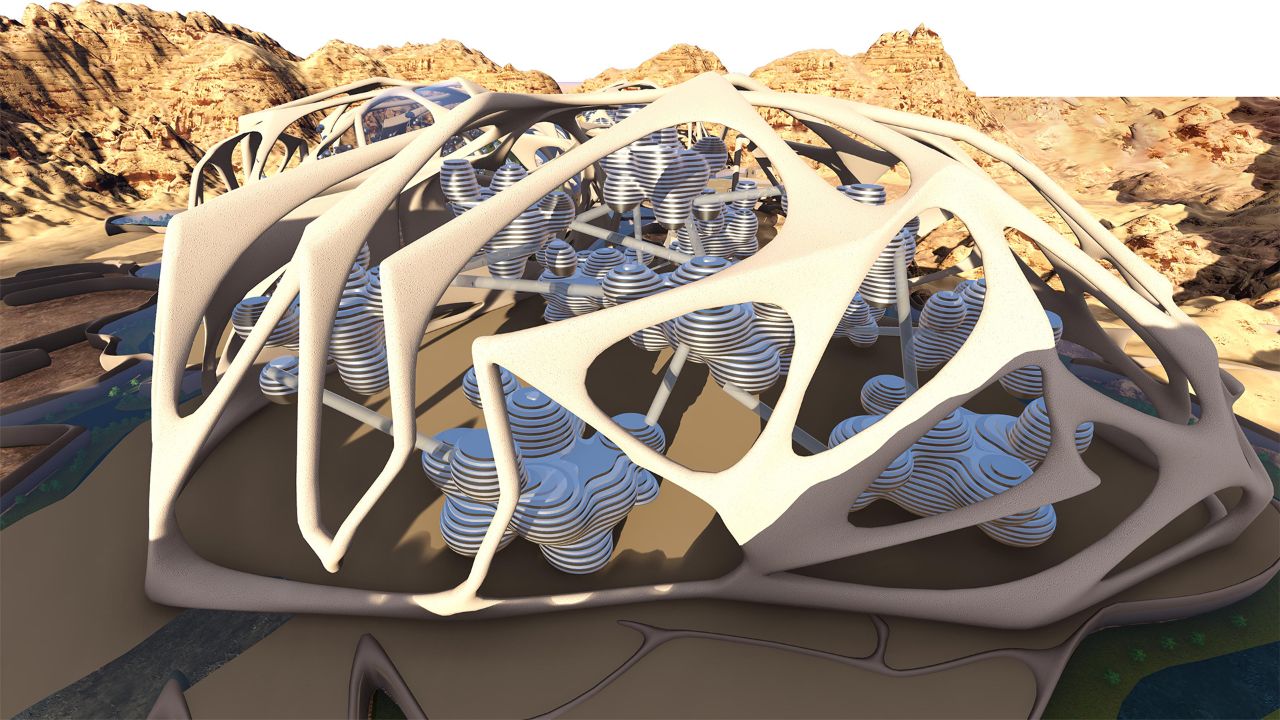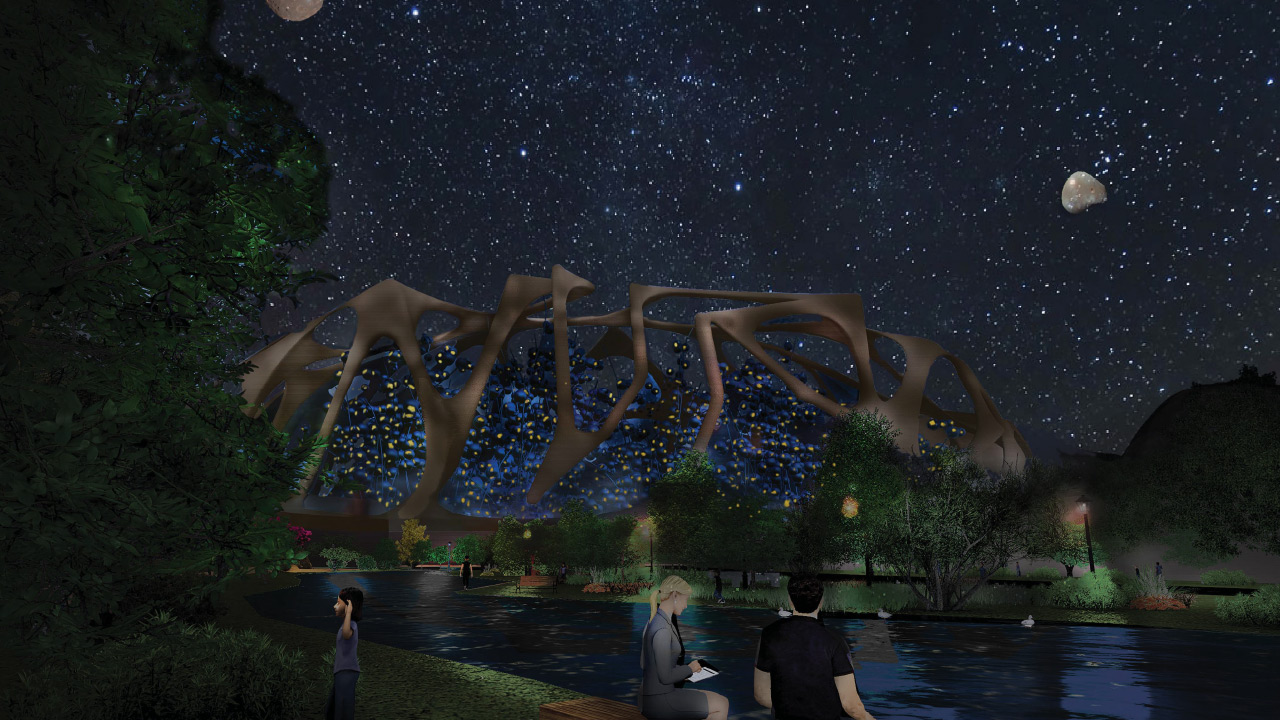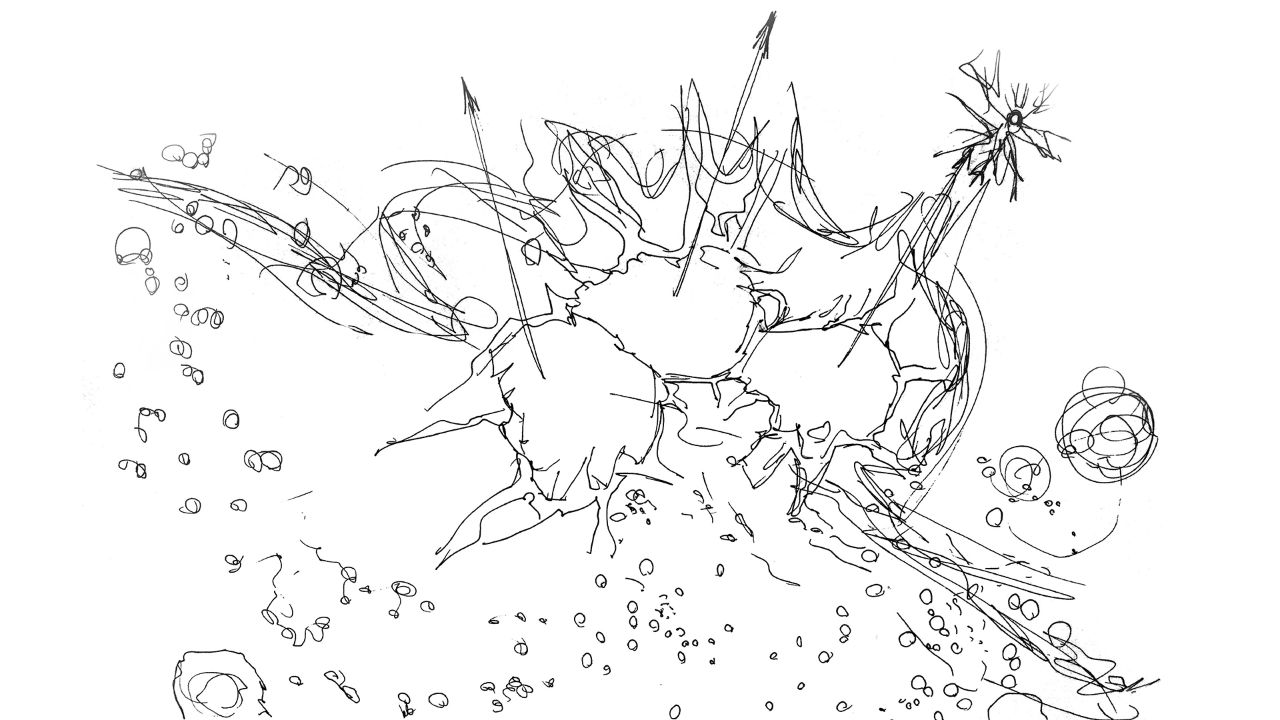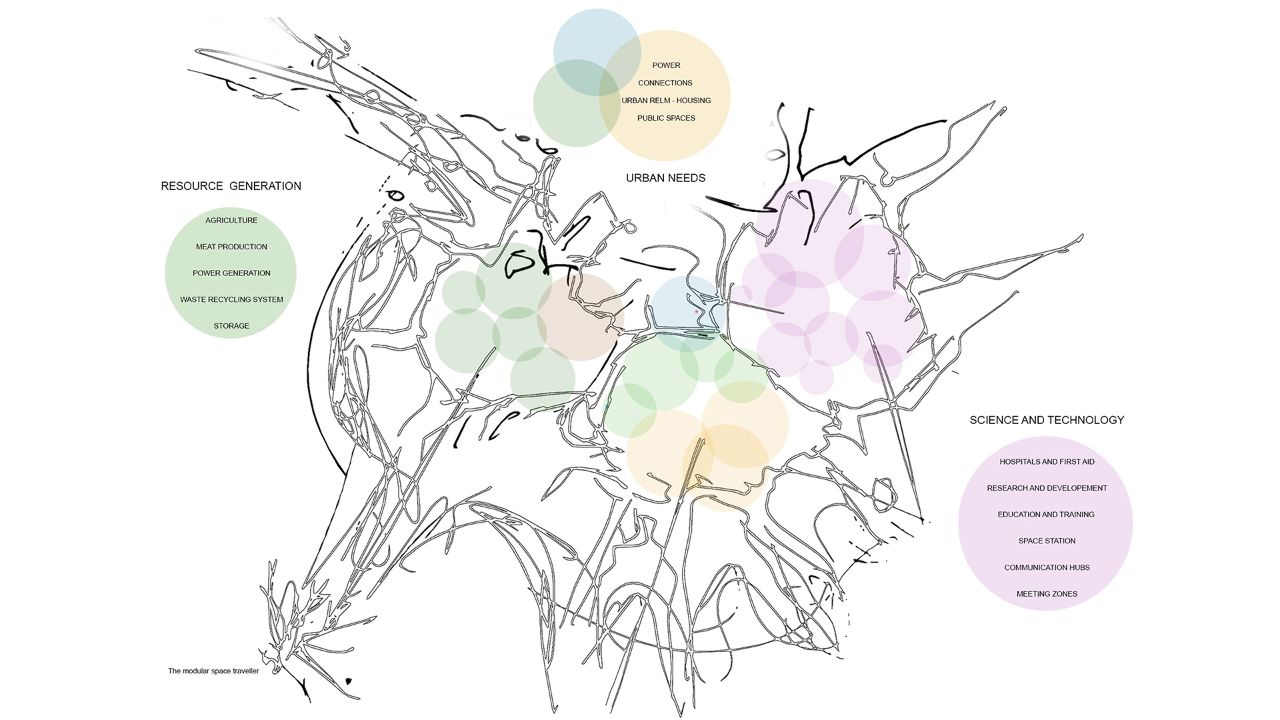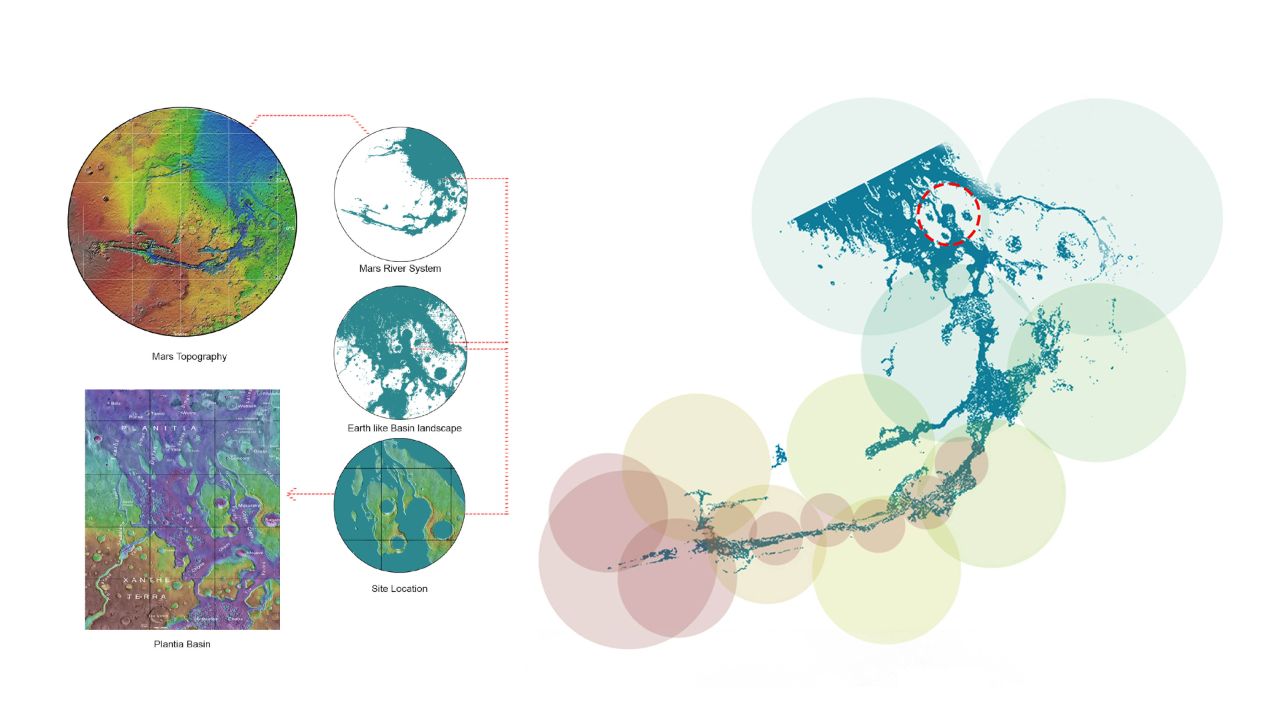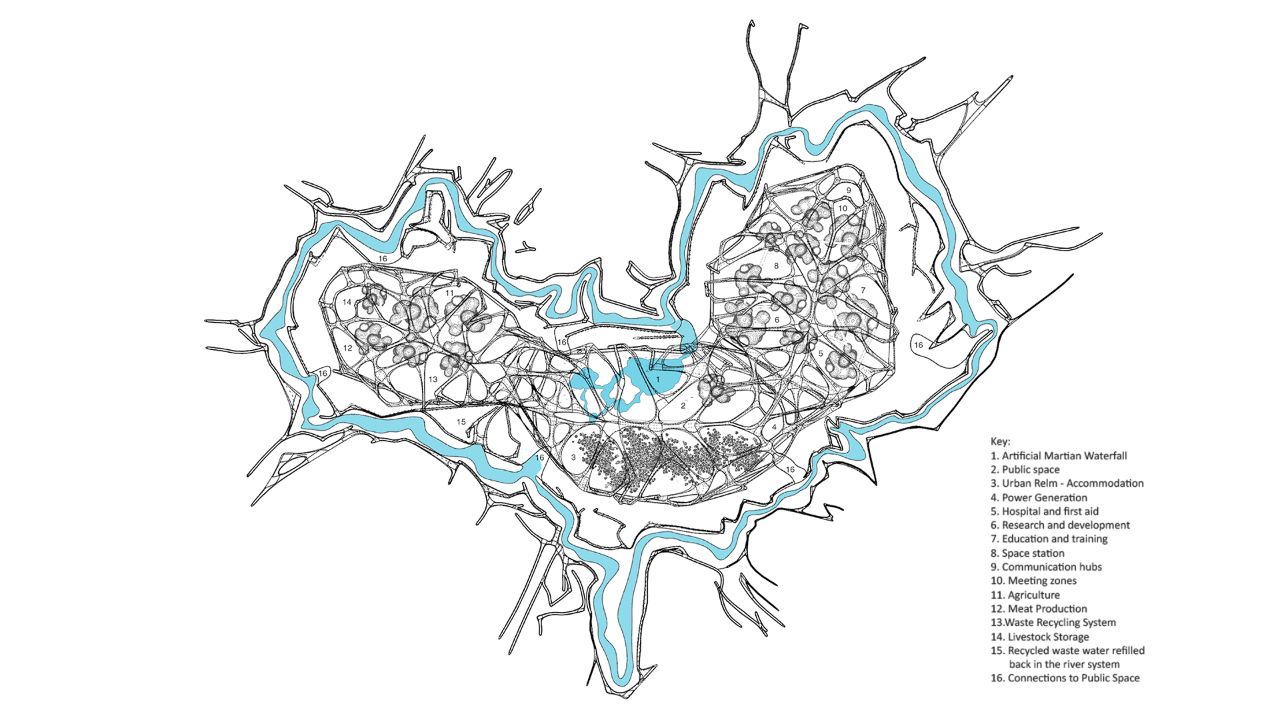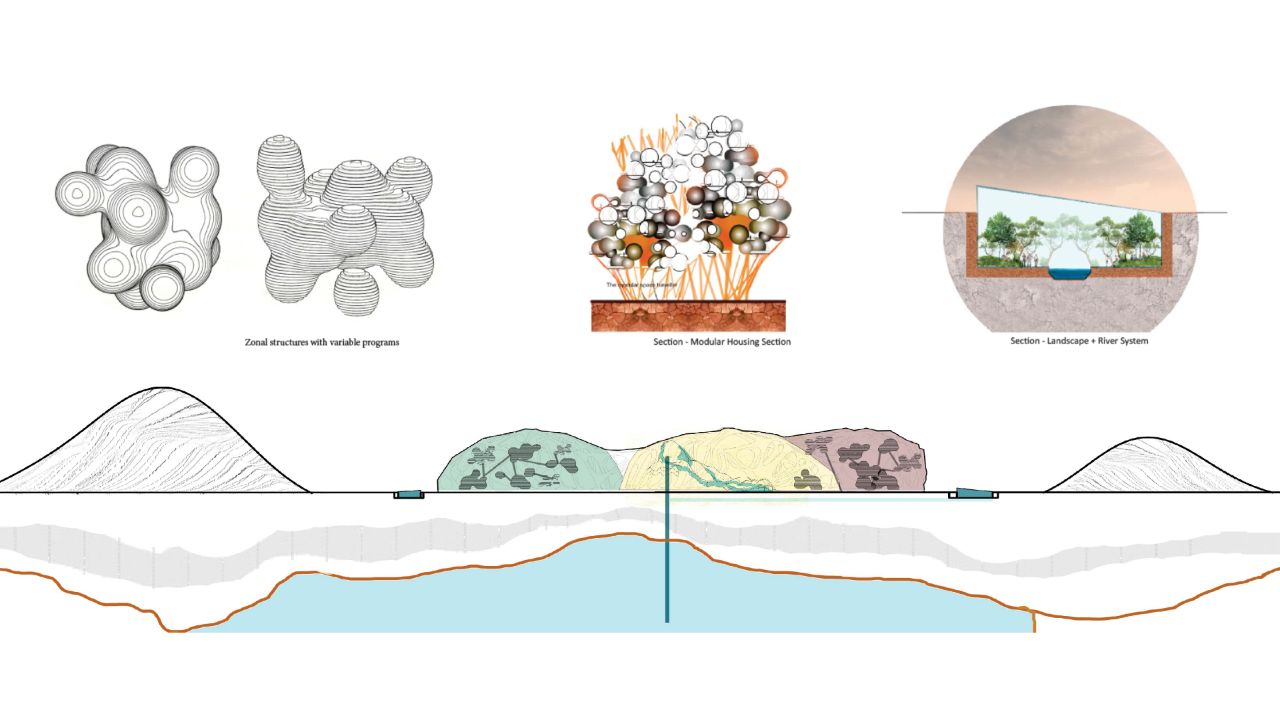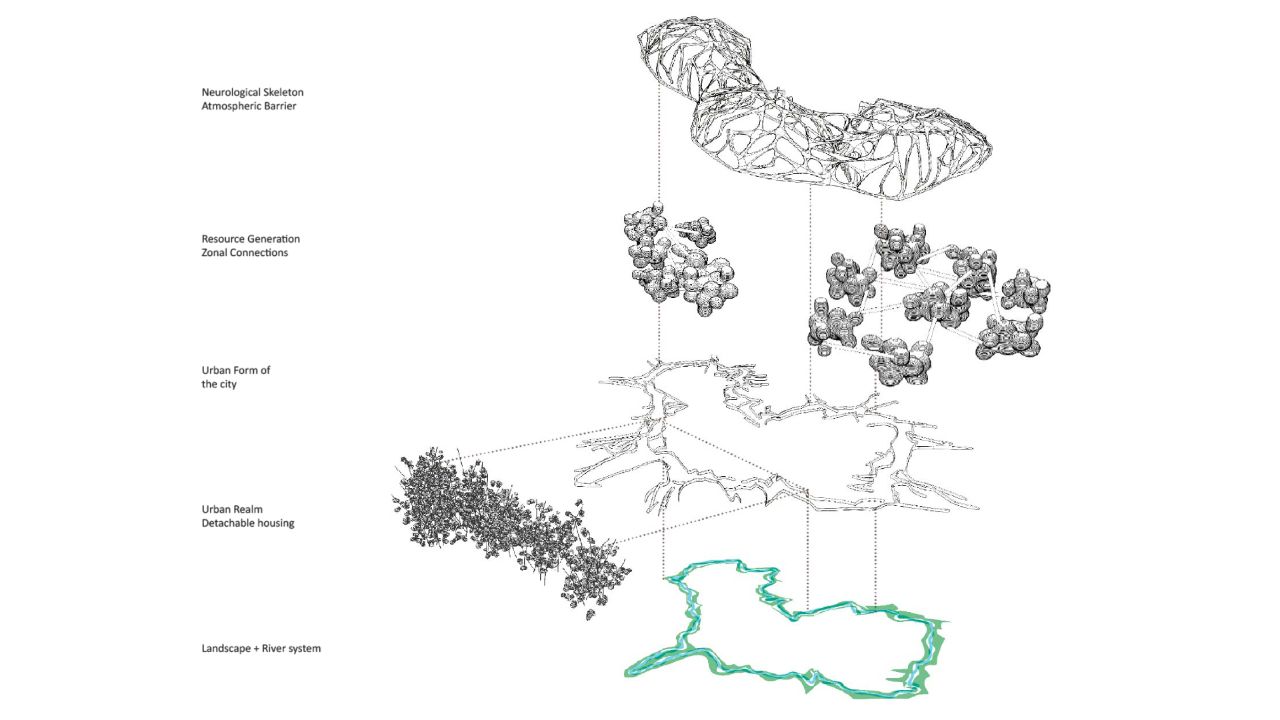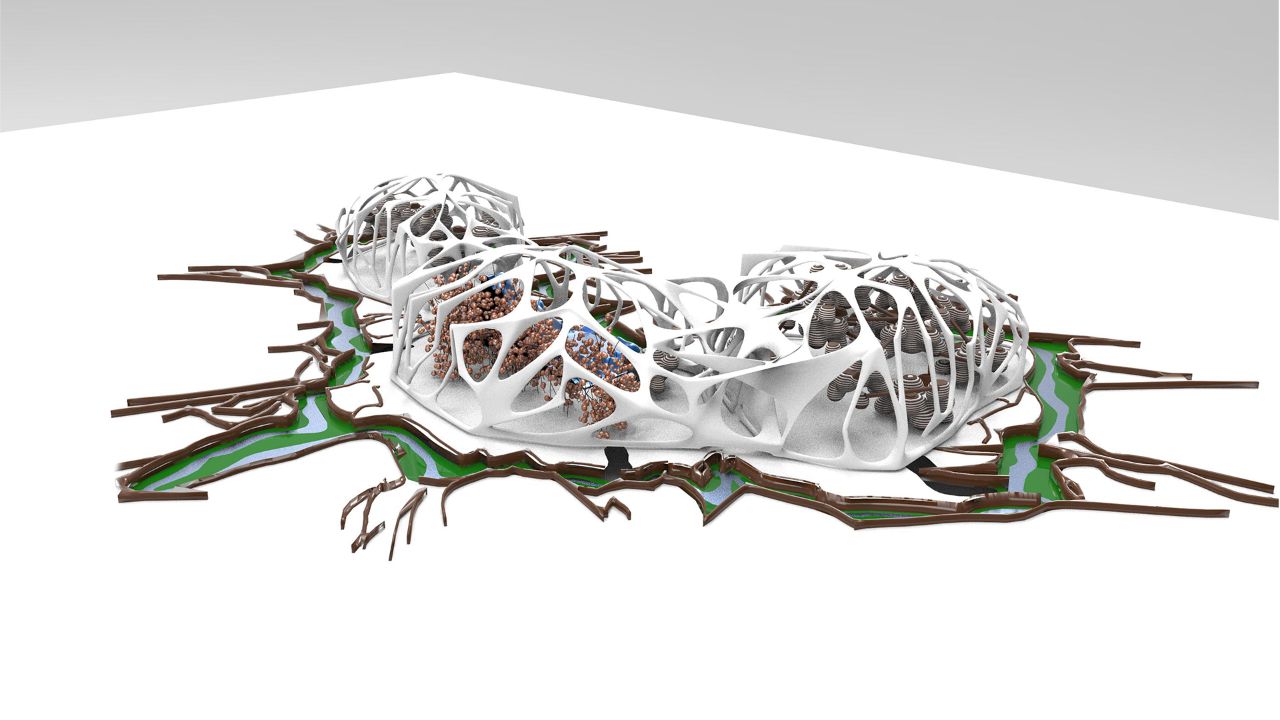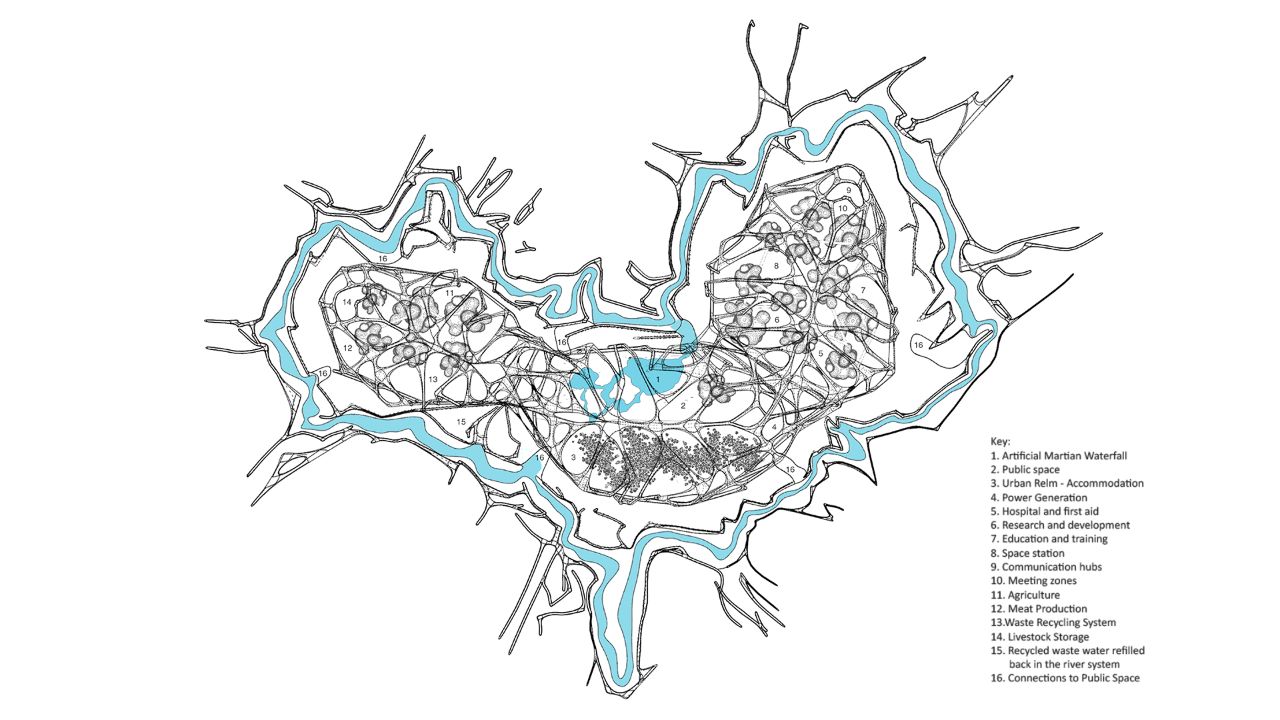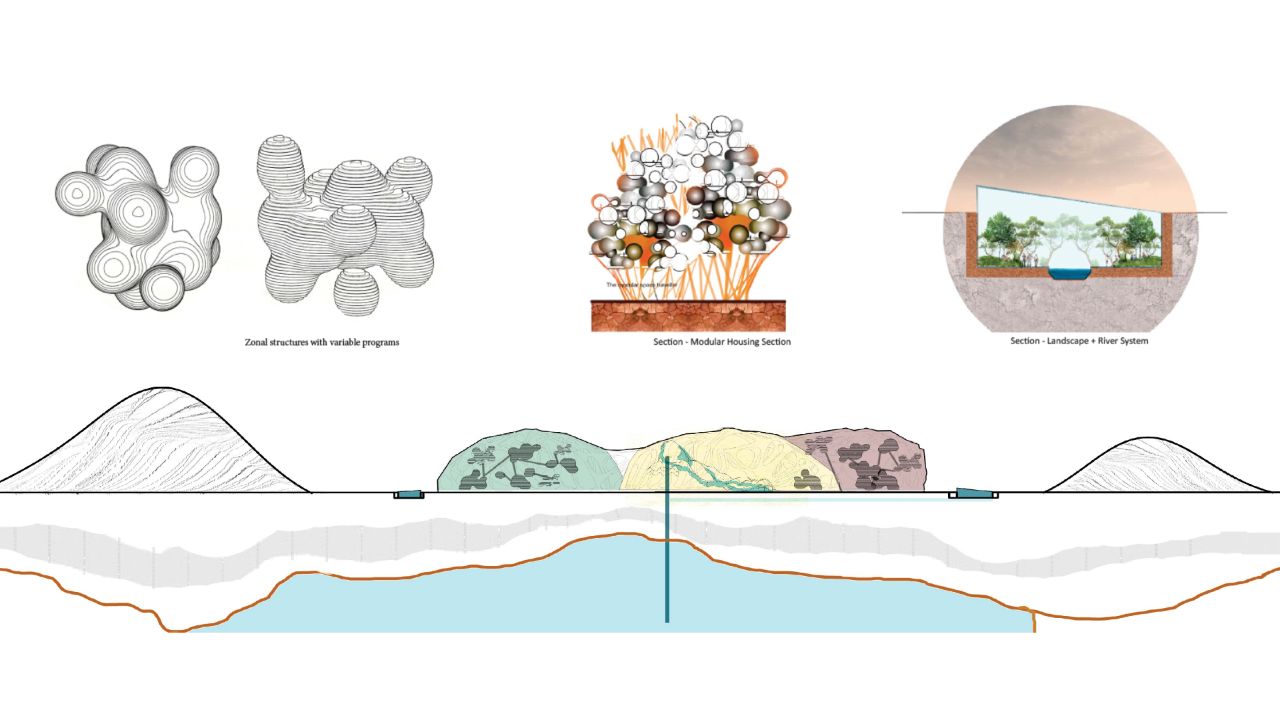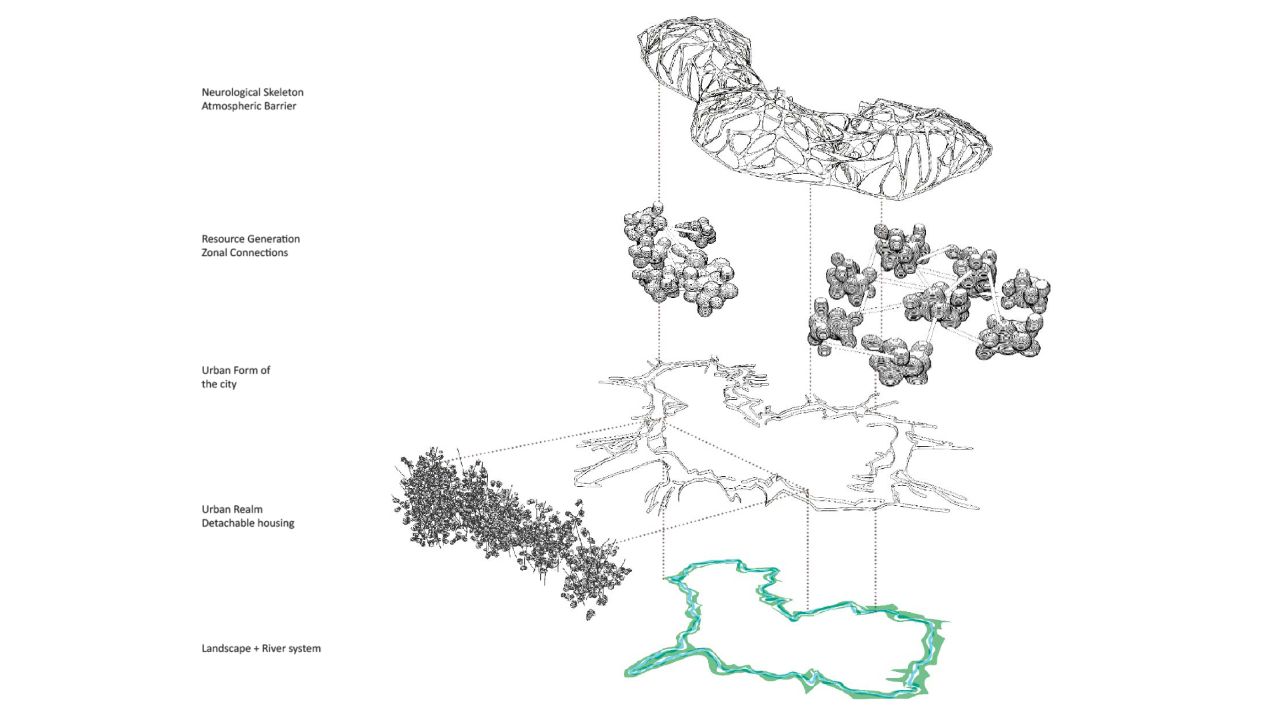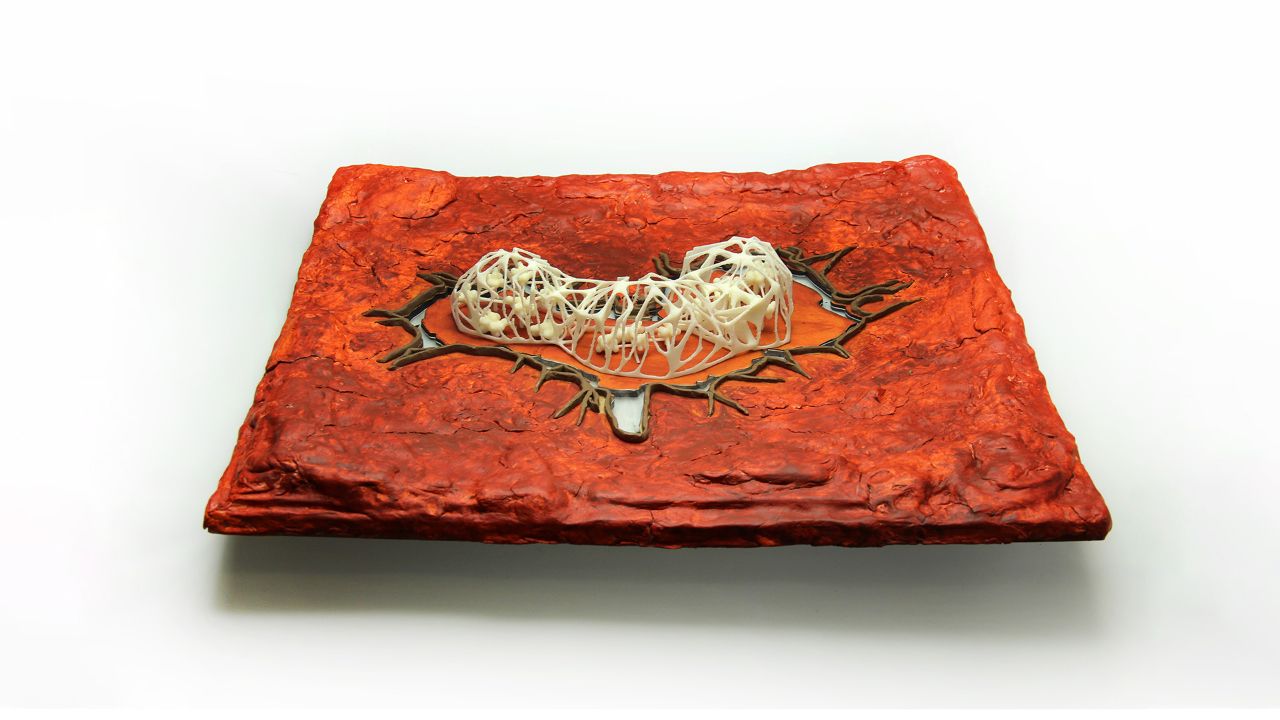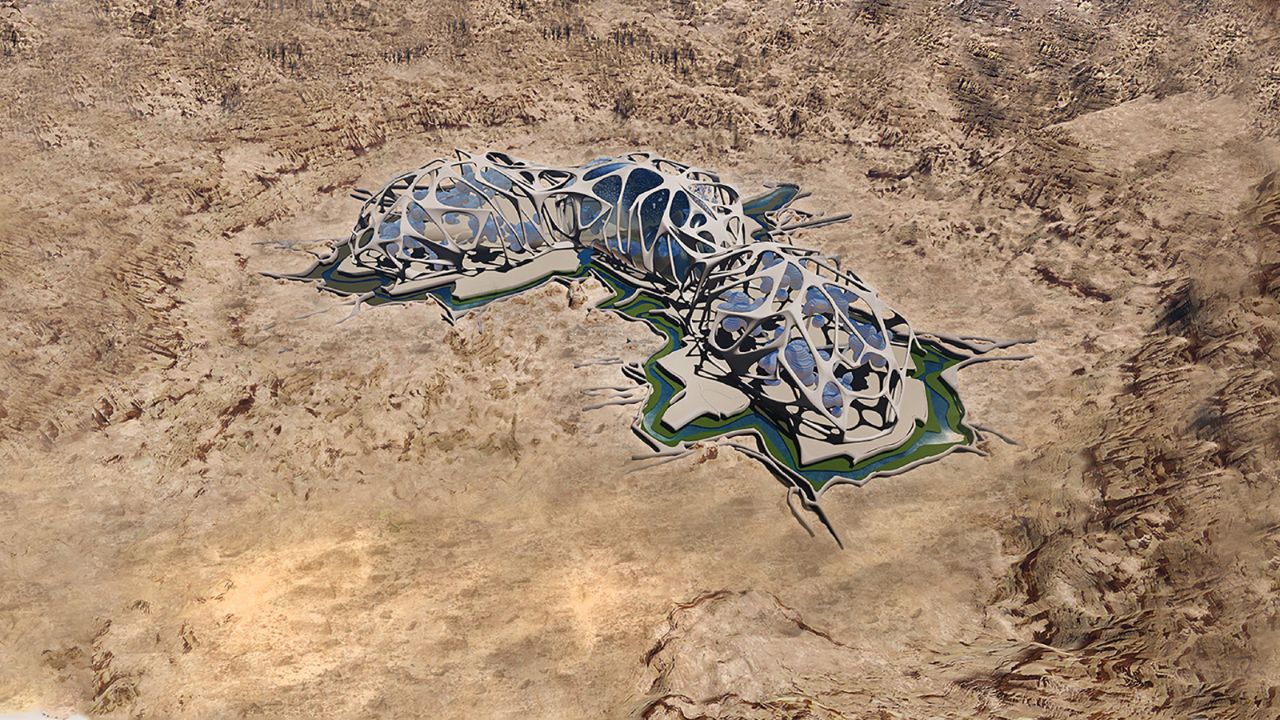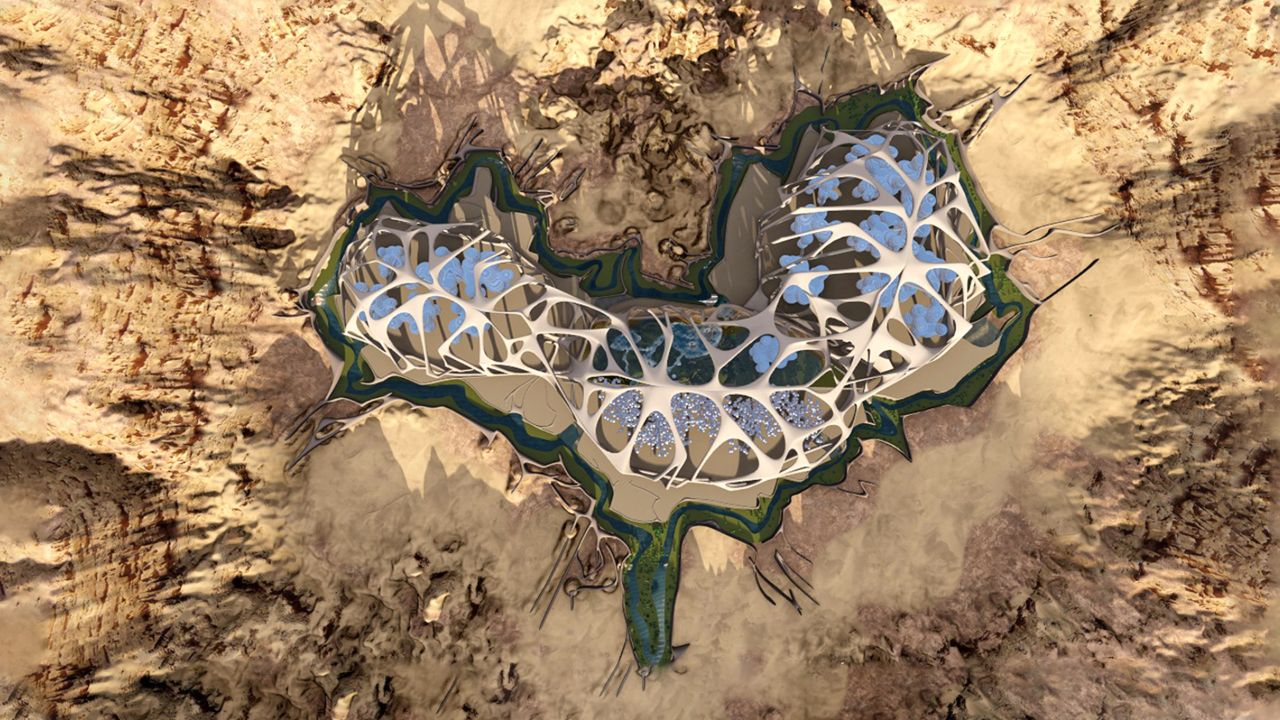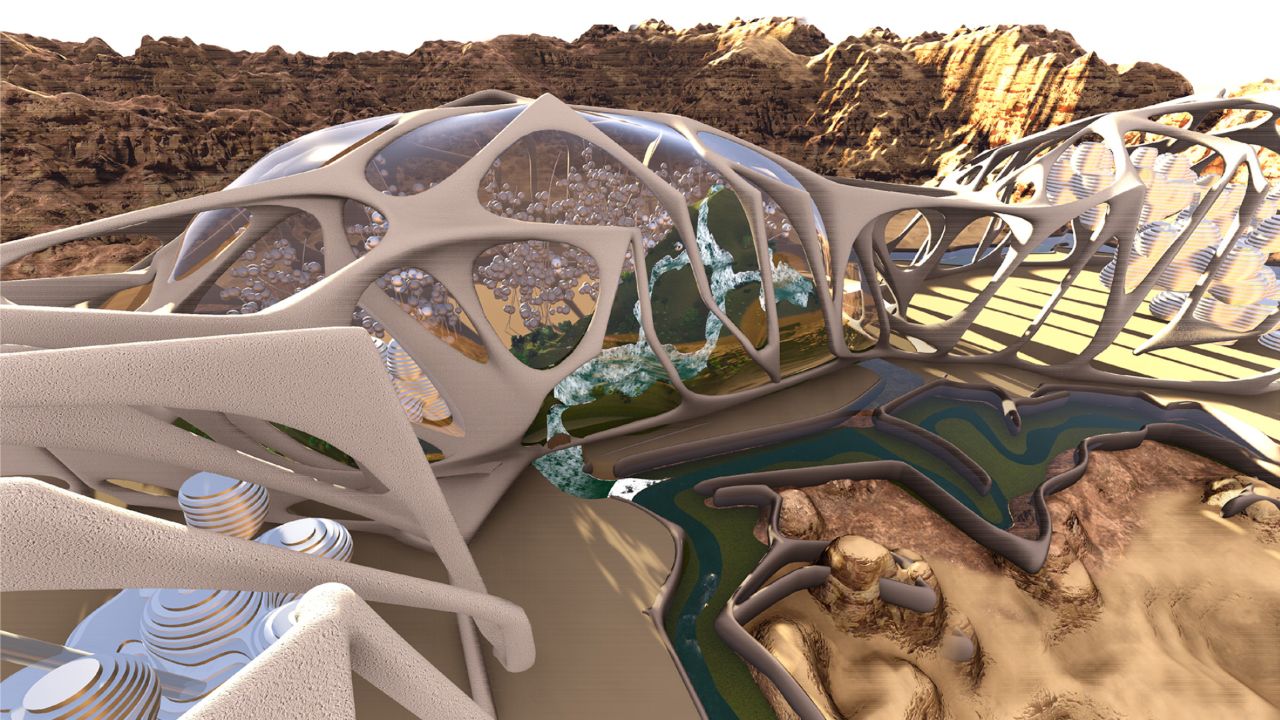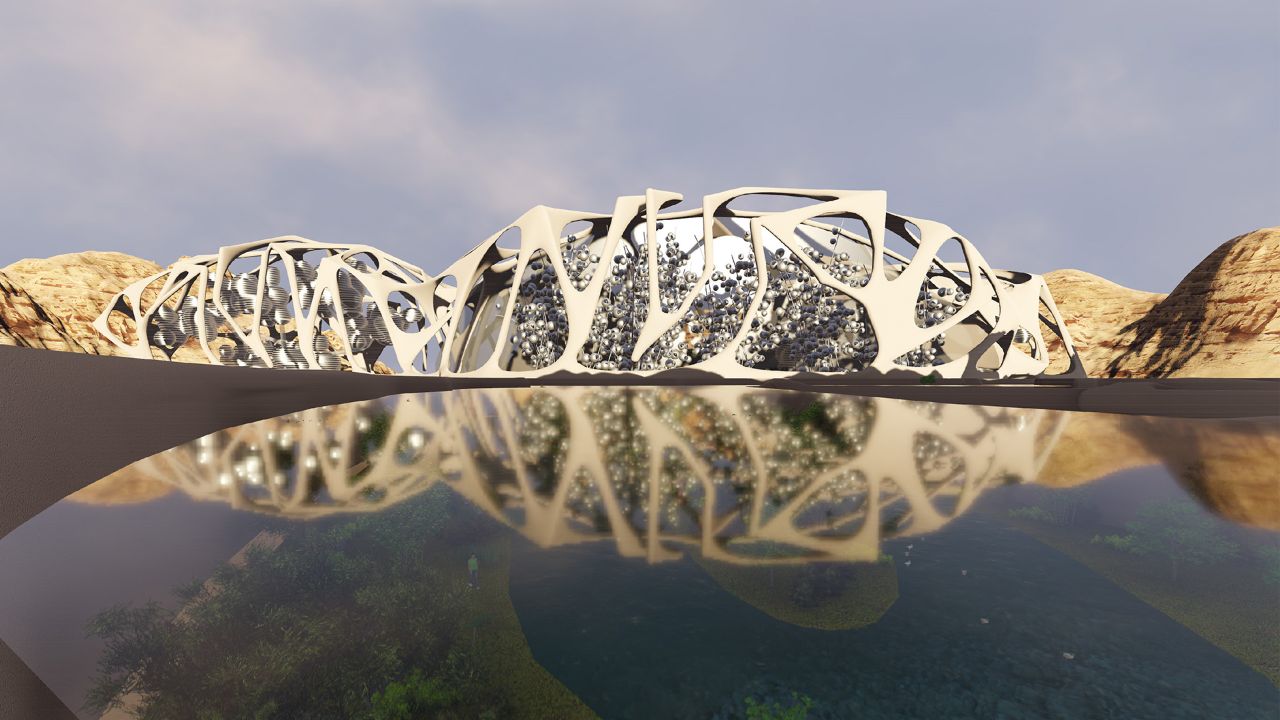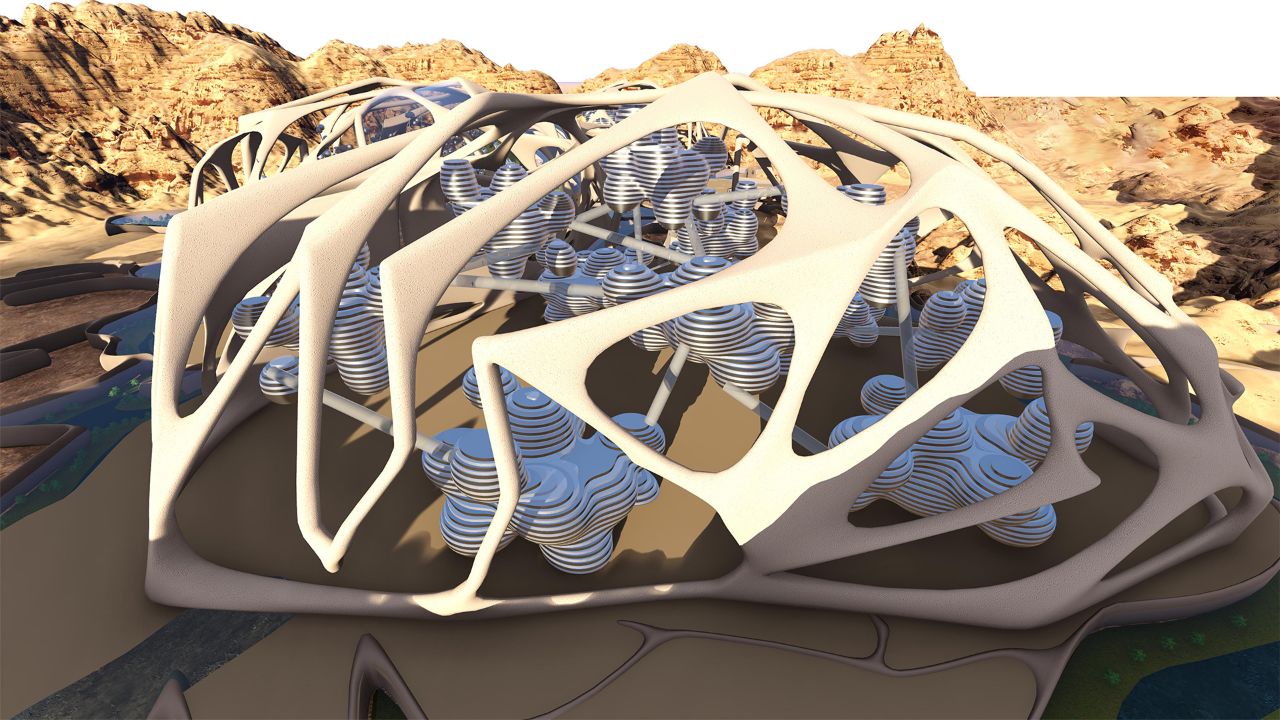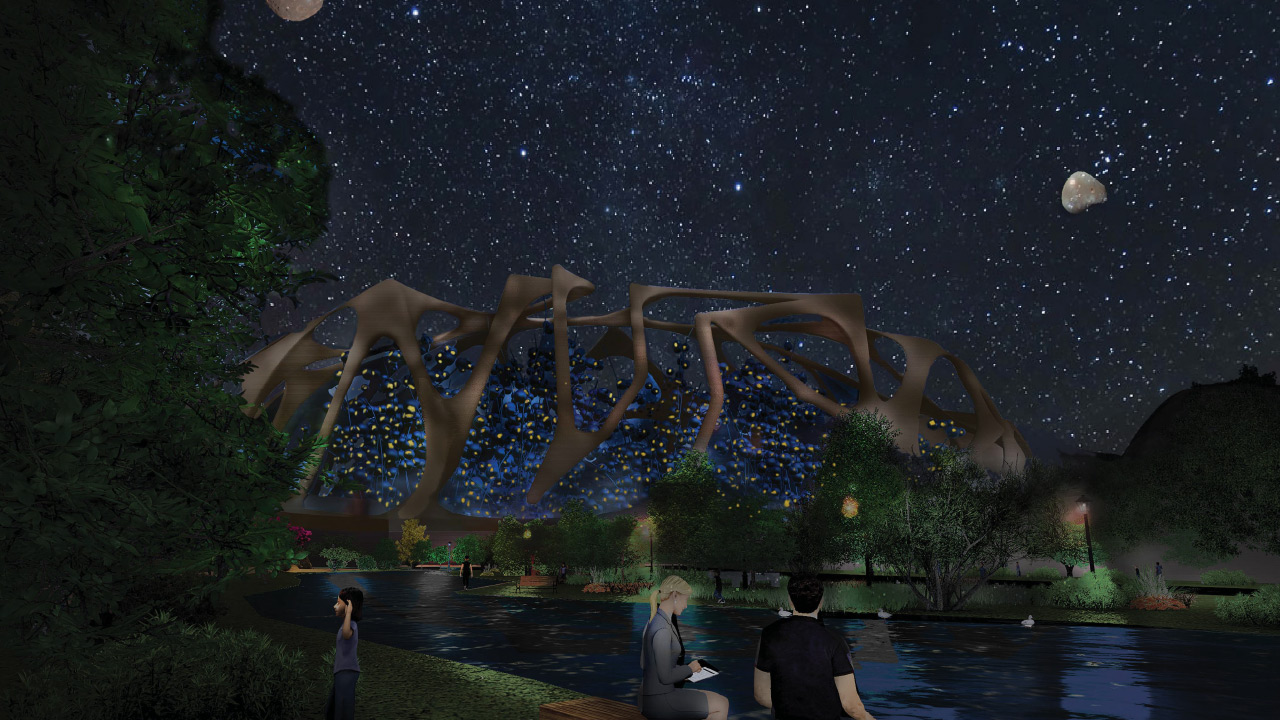Concept
Mars is not just a scientific curiosity, it is a resource-rich world - an opportunity waiting to be explored. The science of space today has all the technologies required for undertaking an aggressive programme of human mars exploration, with the first piloted mission launched by human species reaching the red planet within the decade. The proposal provides the blueprint for the first city on Mars.
In this design thesis, I aim to establish a systemic design approach to facilitate the harbouring of life successfully on the red planet. Using technologies that exist today on earth, The project attempts to remove the manned Mars mission from the realm of mega-fantasy and make it a near-future reality that which can be achieved by recognizing the hurdles and solving them one by one. This design involved research on-site selection in an unexplored alien environment, on the psychological changes in human behaviour in deep isolation, on intensive resource management, about the closed river-loop system and human-non-human relationship.
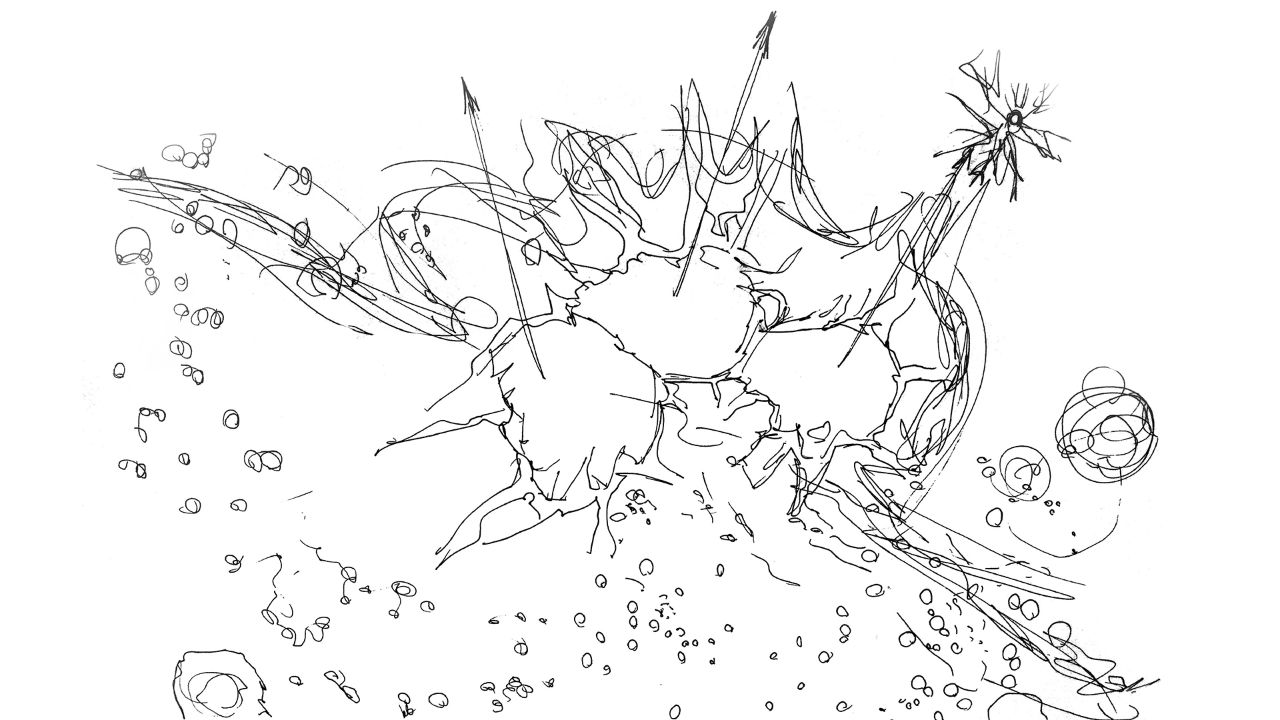
Conceptual sketch on the Martian Terrain.
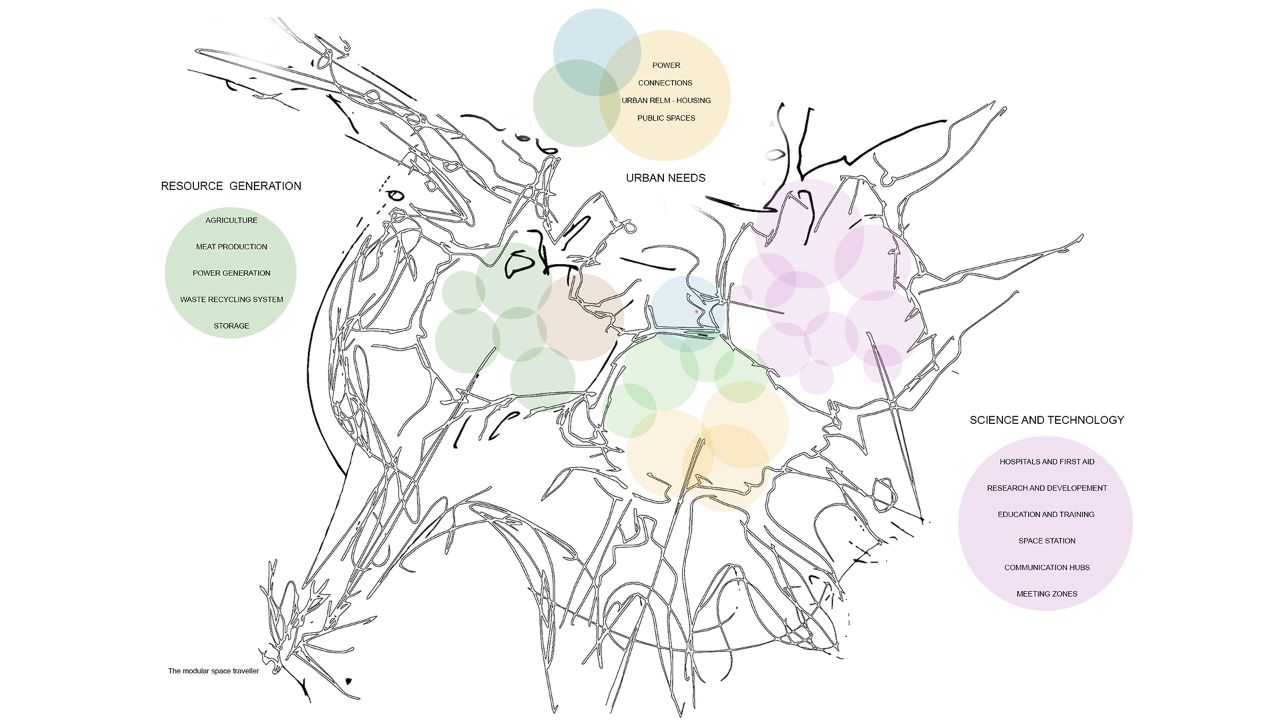
Systemic urban divisions for circular and regenerative city
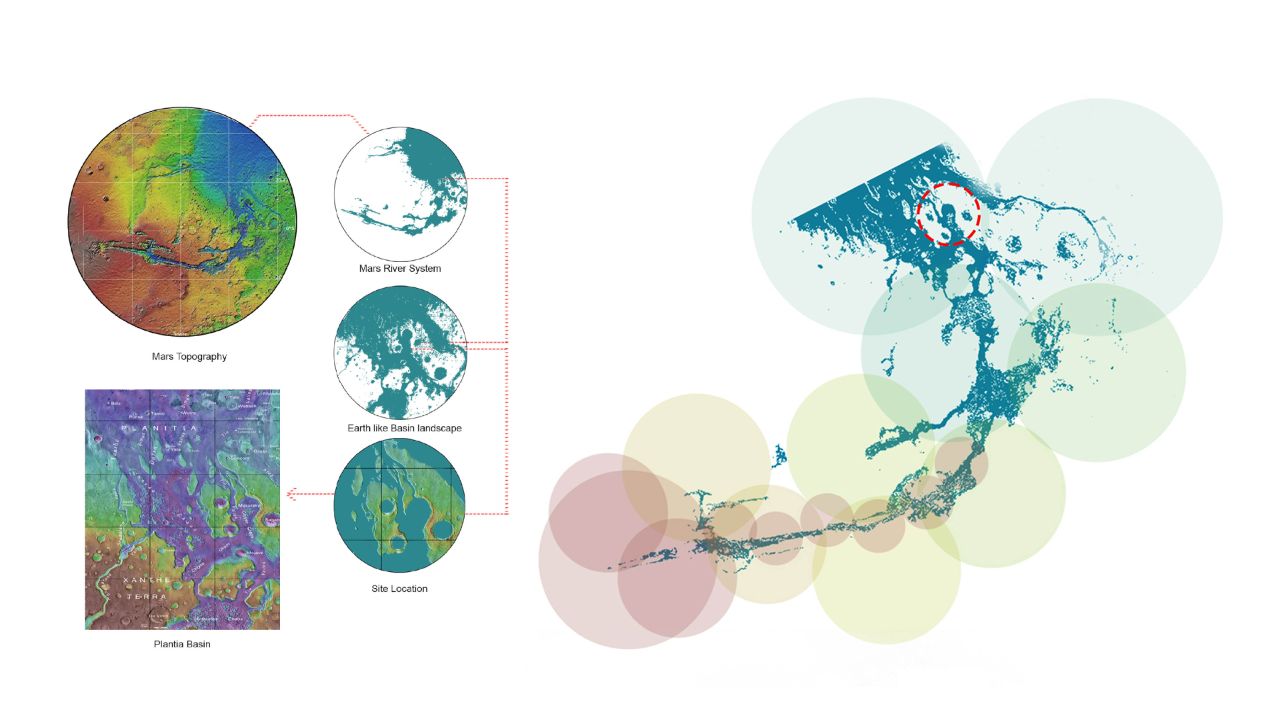
Site selection based on topographical study
